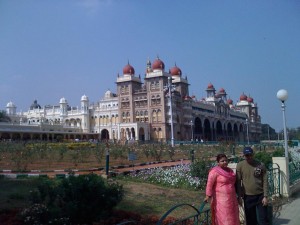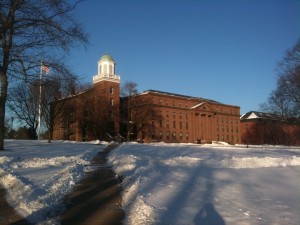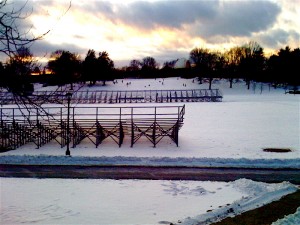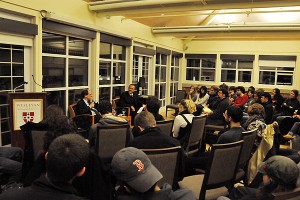This morning we had the all staff meeting kicking off the new semester. I thanked everyone for their hard work over the course of the year, and acknowledged the difficulties we’ve faced in this challenging economic environment. Faculty and staff are working harder than ever to keep Wesleyan at the forefront of higher education.
The unpleasant task I had this morning was to provide a brief update on the university’s lawsuit against former Vice President and Chief Investment Officer Thomas Kannam. This afternoon I have emailed the following update to the campus community, and I thought it best to share it with this blog’s readership:
Many of you are aware that Wesleyan has commenced litigation against former Vice President and Chief Investment Officer Thomas Kannam. For those of you hearing about this for the first time, here are the basic facts: On September 30, 2009, Wesleyan received a report through its Whistleblower Policy concerning Mr. Kannam’s potential violation of Wesleyan’s Conflict of Interest Policy. This report was fully and promptly investigated. We believe that Mr. Kannam was a principal in one or more other substantial business ventures and that his work was potentially in conflict with his responsibilities at the University. As a result of this activity, Wesleyan believes that Mr. Kannam had, at a minimum, violated the Conflict of Interest Policy and his employment agreement with the University. Mr. Kannam was terminated on October 13, and on November 24 Wesleyan brought suit in Connecticut Superior Court against him and related parties.
An unpleasant matter like this one, touching a community like ours, stimulates questions and speculation as a matter of course. In this case our strong desire for transparency must be weighed against both legal interests and institutional policy regarding personnel issues. Given the pending litigation, it would be inappropriate for me to comment at length. What I can say is that the situation, while disappointing, is no cause for alarm. However, the University has an obligation to all those who have supported it over the years to hold members of the campus community to the high standards expected of them, and this litigation reflects just how seriously the University takes its fiduciary responsibilities and adherence to its policies. Once the nature and scope of Mr. Kannam’s activities were revealed, we acted quickly and judiciously.
Wesleyan’s endowment is being overseen by the Treasurer’s Office in close consultation with the Portfolio Subcommittee of the Board of Trustees. A search process is underway that will result in new leadership for endowment management, and I will be able to report on this in the spring. In the meantime, I am gratified by the continuing support the University has been receiving from its alumni and others.
[tags]Vice President and Chief Investment Officer Thomas Kannam, Conflict of Interest Policy, lawsuit[/tags]







